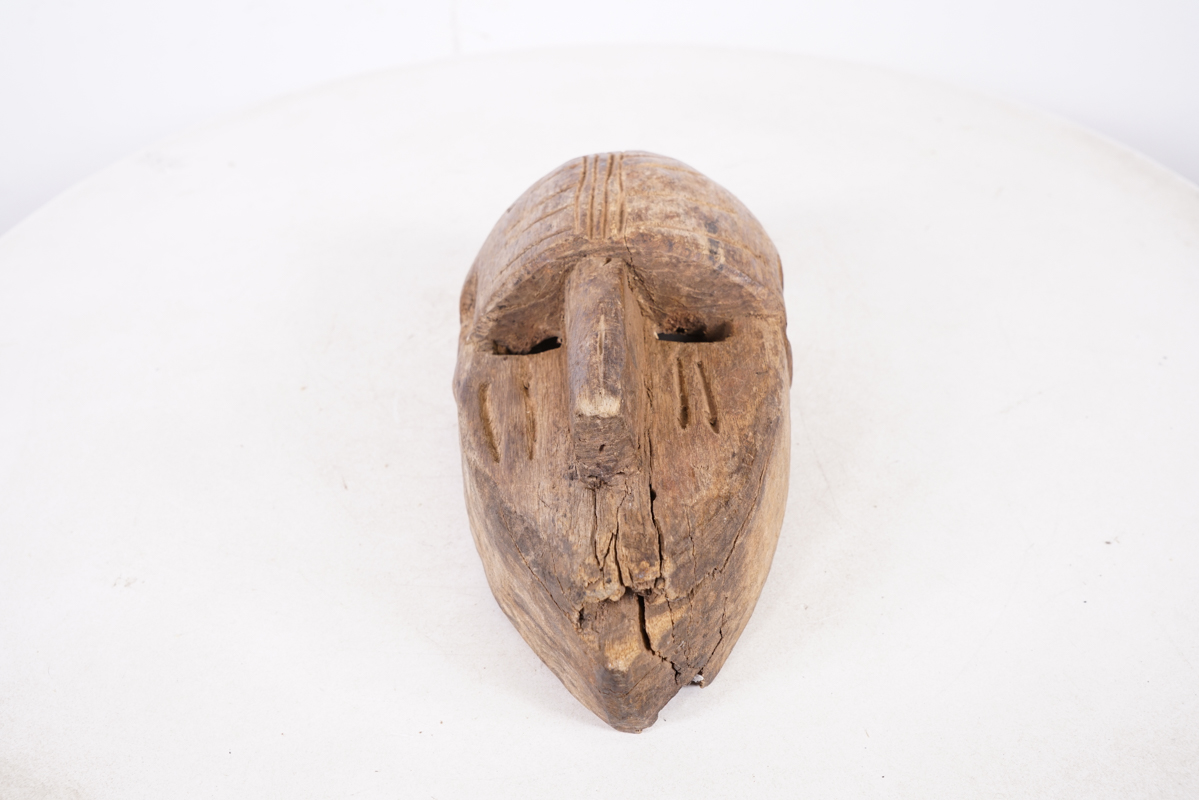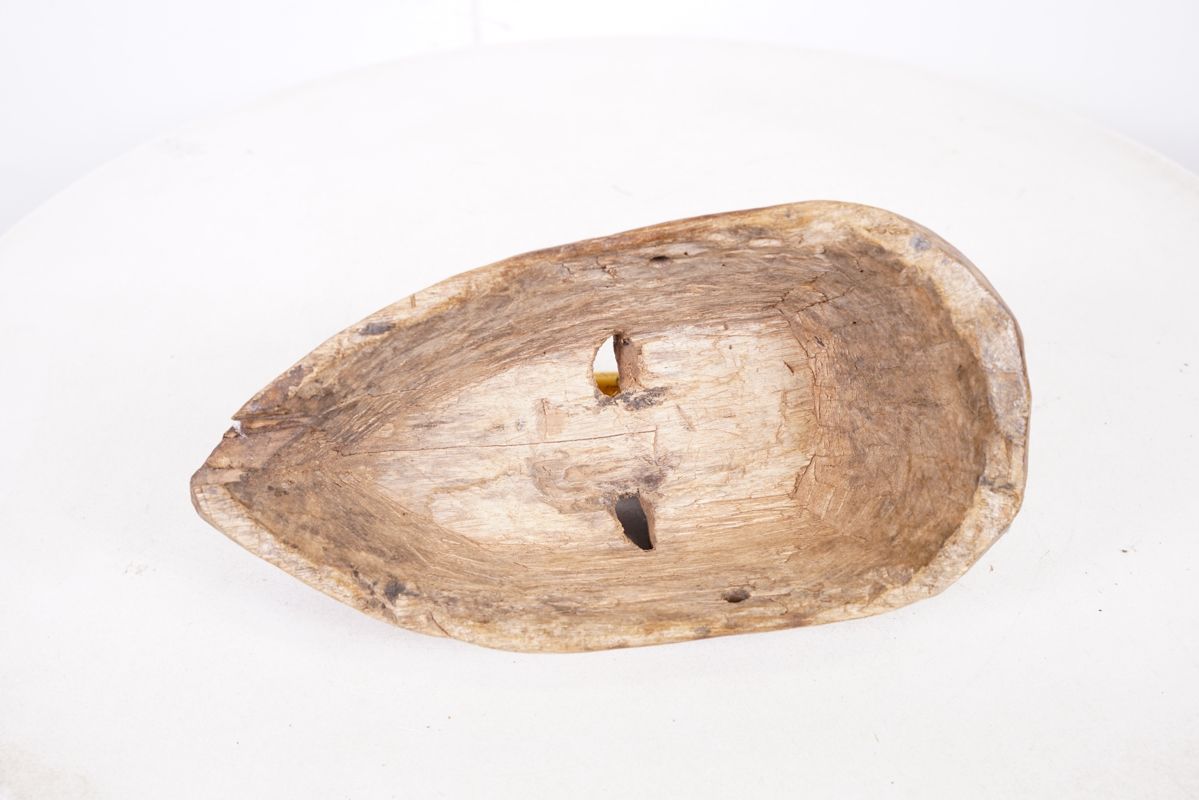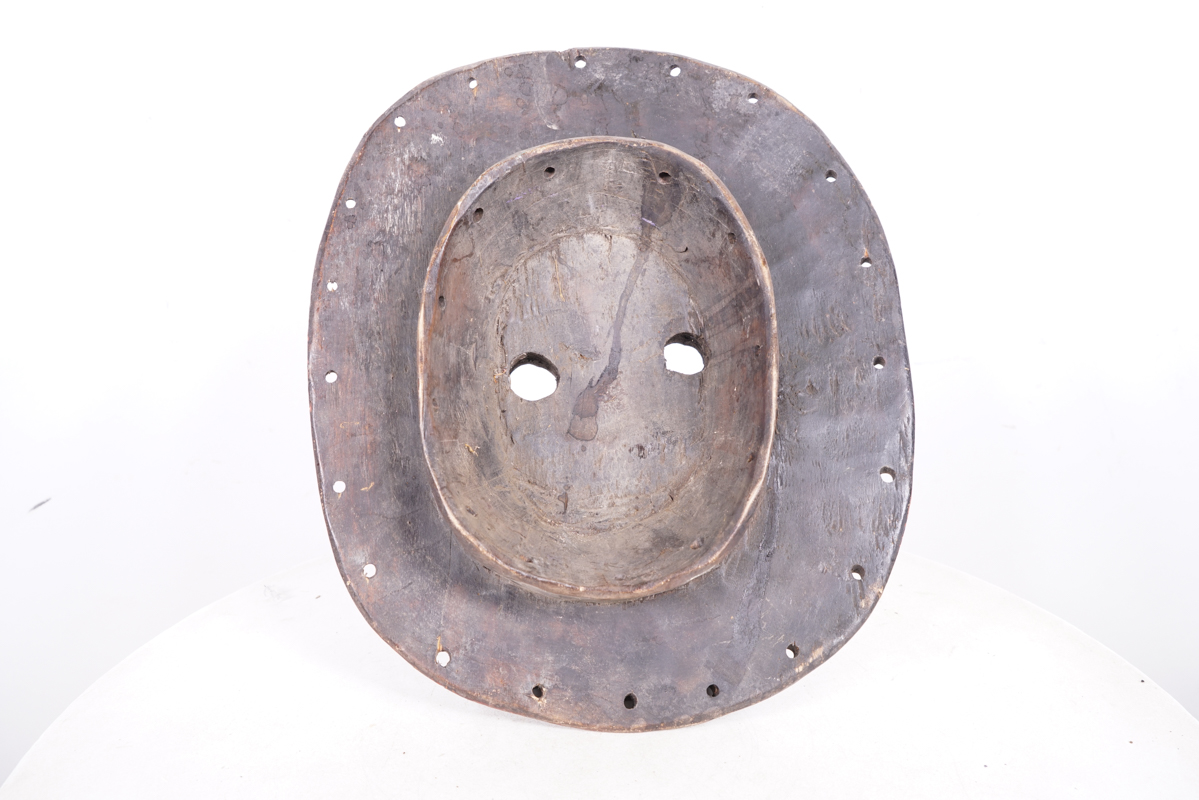These masks were carved in the style of the Bamana people of Mali and Teke people of DR Congo. The masks measure 9.75-16 inches tall and weigh 1-3.5 pounds each. The pieces have cracking, scrapes and scuffs throughout – please inspect images. Stands are not included.
Teke and Bamana 4 Mask Lot 9.75″-16″ – African Tribal Art
Original price was: $380.00.$95.00Current price is: $95.00.
1 in stock

| Type of Object | 4 masks |
|---|---|
| Ethnicity | Bamana/Bambara, Teke |
| Material | Wood and pigment |
| Approximate Age | Unknown |
| Height (Inches) | 9.75"-16" |
| Width (Inches) | 5"-13.5" |
| Depth (Inches) | 2.25"-6.5" |
| Weight (Pounds) | 1-3.5 lbs |
| Overall Condition | Cracks, scrapes and scuffs – please inspect photos. |
Tribe Information
About the Bamana People
“The 2,500,000 Bambara people, also called Bamana, form the largest ethnic group within Mali and occupy the central part of the country, in an area of the savannah. They live principally from agriculture, with some subsidiary cattle rearing in the northern part of their territory. The Bambara people are predominantly animists, although recently the Muslim faith has been spreading among them. The Bambara kingdom was founded in the 17th century and reached its pinnacle between 1760 and 1787 during the reign of N’golo Diarra is credited with conquering the Peul people and in and in turned claimed the cities of Djenne and Timbuktu. However, during the 19th century, the kingdom began to decline and ultimately fell to the French when they arrived in 1892. For the most part, Bambara society is structured around six male societies, known as the Dyow (sing Dyo).”
Source:
Baquart, Jean-Baptiste. The Tribal Arts of Africa. New York: Thames and Hudson Inc. 1998. Print.
About the Teke People
“The Teke people settled in a territory lying across the Republic of Congo, the Democratic Republic of Congo (formerly Zaire) and Gabon. During the 15th century, they were integrated into the Tio kingdom, but attained independence in the 17th century. Today, they live in villages led by a clan elder known as the Mfumu, who answers to a hereditary land-chief called Mfumu na tzee. Their economy is mainly based on farming maize, millet and tobacco, but the Teke are also skilled fishermen and traders. They believe in a supreme God, Nzambi, whose favours can be objtained with the help of tutelary spirits. Teke artists carved figures predominantly surrounded by fetish material, known as Bilongo. These figures protect and assist the Teke and, if a fetish figure successfully demonstrates its power, its owner may detach its Bilongo, break it into several pieces and insert fragments into other figures. He will then sell the new figures to neighbouring families, leaving the original statue with an emaciated body.”
You must be logged in to post a review.










Reviews
There are no reviews yet.